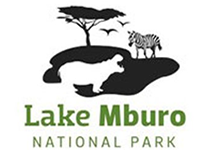In Uganda’s tourism planning matrix, Lake Mburo National Park presents a distinct case for structured wildlife and habitat viewing.
The park’s small geographic scale, combined with its acacia woodland ecology, allows for consistent visibility across multiple species, habitat types, and recreational zones.
This visibility is neither incidental nor uniform; it reflects a specific combination of topography, vegetation profile, and regulatory zoning that shapes how and where sightings occur.
Understanding what is visible in Lake Mburo requires deliberate classification. This includes consideration of terrain access, seasonal distribution, aquatic margins, edge-of-park activity, and non-motorised observation corridors.
Each viewing opportunity is governed by ecological, spatial, and administrative variables that merit discrete attention.
The Landscape and Setting
Lake Mburo National Park lies within the Victoria Basin eco-region.
It falls under the savannah mosaic of the Northern Acacia–Combretum zone, characterised by compacted soils, seasonal water stress, and mixed deciduous woodland.
Dominant plant species include Acacia hockii, Acacia sieberiana, Terminalia mollis, and scattered euphorbia thickets.
The park is defined by a network of five lakes: Mburo, Kigambira, Kazuma, Bwara, and Nakivali. These are remnants of an ancient lake system along the Kagera catchment.
Lake Mburo itself covers approximately 13 square kilometres and sits near the park’s core tourism zone.
The swamps and inlets that feed into the lakes remain intact, supporting hydrophilic plant species such as Cyperus papyrus, Typha capensis, and Phragmites mauritianus.
The park spans a rolling landscape with ridges, escarpments, and depressional lake basins. Wetlands and riparian forests dominate the lowest areas (around 1220 metres).
Uplands (reaching 1828 metres) carry bushland and shallow rocky soils, which host klipspringer and topi herds.
The soils are ferruginous with lateritic crusts, especially in elevated zones.
Drainage is impeded in lower reaches, forming semi-permanent waterlogged zones that attract buffalo, hippos, and marsh birds. These areas are seasonally navigable and create visual contrast for park interpretation.
Tourism activity is concentrated along the eastern section, near Mihingo and Rwonyo. Conservation-sensitive zones include the Kazuma peninsula and the wooded northwestern blocks.
Access roads are unpaved and seasonal, but entry through Nshara and Sanga gates remains open year-round.
